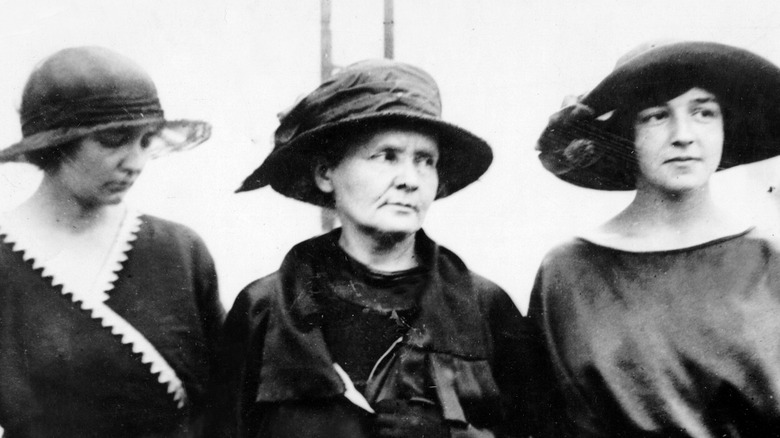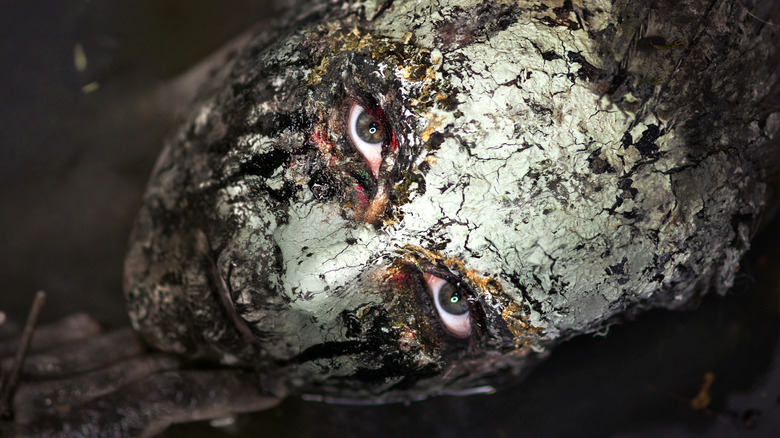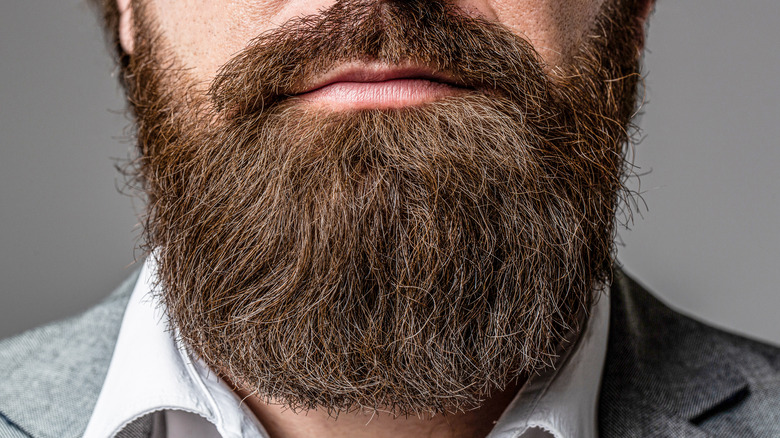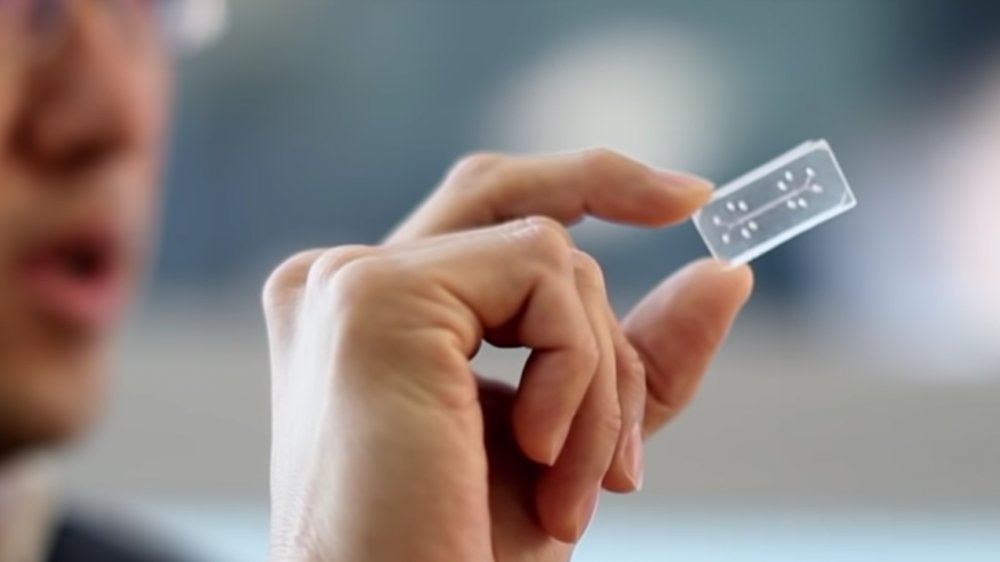
Vintage Hygiene Tips That Are Actually Real
The Most Dangerous Beauty Tips Ever
Read the following pages and prepare to be amazed, shocked, and disgusted by real historical activities people used to engage in for the sake of what might charitably be called “hygiene”. The things people used to do for the sake of health, beauty, and even cleanliness were often disgusting and offensive beyond measure. And to make matters worse, they would often be useless at best, if not actually very harmful and dangerous.

Among the things you’ll read about in this article are some truly insane health practices from the past also. Unfortunately, not all of these are from the very distant past. So read on, but be prepared to have your appetite spoiled. Don’t say I didn’t warn you!
Bathtub water was shared by families or even towns
Heating up a tub full of water to take a bath was not a simple or quick task in the olden times. Or even gathering enough water in the first place. For that reason, people would often take turns bathing in the progressively dirtier and dirtier water. The folks back then were nothing if not efficient.

Since the head of the household was considered to be the most important, he would bathe first, and so on down the line until the baby would get bathed in utterly filthy, even black, water. According to some, this is the origin of the phrase, “Don’t throw the baby out with the bathwater”!
One way to “cure” baldness was chicken poop
One of the few species of vanity in which men traditionally rival women is the manifestation of baldness. A fate worse than death! Men have tried almost anything to avoid or cure the dreaded affliction.

In the 17th century, one popular baldness cure involved men rubbing chicken poop together with caustic lye solution on their scalps. It was, shall we say, less than effective.
There was a guy whose job it was to wipe the king’s butt
Among English royalty going back at least as far as the 16th century and lasting all the way to the beginning of the 20th was a role called “Groom of the King’s Close Stool”. His primary task was to assist the king with toilet and hygiene functions.

This might seem extremely demeaning to our modern sensibilities, but in those times it was seen as being highly honorable to be so close and intimate with the king. In fact, the Grooms of the King’s Close Stool often acquired considerable wealth and wielded major political power.
Women used crocodile dung to prevent pregnancy in ancient Egypt
It’s not entirely clear whether the women of ancient Egypt thought this method of birth control worked pharmaceutically, or by spoiling the mood for everyone involved.

You see, what they did was roll up balls of — no, really — crocodile dung and use them as pessaries, that is to say devices that they shoved up their you-know-what.
People used makeup that was made of lead…and made your face fall off
Throughout much of European history, pale skin was considered beautiful. In fact, pale was synonymous with fair, which actually means “beautiful”. The idea was that if you were poor, you had to spend much of your life outdoors working hard and getting a tan, so fair skin was a signal of wealth. So of course, with time natural paleness just wasn’t good enough, so people had to come up with novel ways of getting the skin ever lighter and lighter.

So along came Venetian Ceruse, a variety of makeup popular for much of the 16th century. It was reputedly worn by the very pale Queen Elizabeth I, pictured here. It was very much in demand, but oh so very dangerous. Repeated use would cause lesions on the skin, so the wearer (victim) would wear even more to cover them up, eventually leading to potentially fatal lead poisoning.
Women wore hairstyles that could catch on fire
You might think the 1980s was the age of big hair, but don’t forget the 17th century. If you could afford it, your hair would be styled as high as possible. And if you could afford big hair, you were probably a member of the sort of class that would attend ballroom dances.

And if you were attending a ballroom dance before the age of electricity, you had hundreds or even thousands of candles burning right above your head. Your head, piled high with hair. Surrounded by thousands of open flames. You see where this is going? Nowhere pleasant, let me assure you.
People used shoe polish that could make you faint and/or die
Nitrobenzene is an amazing ingredient for shoe polish if you want your shoes to be extra super shiny and if you want it to have that distinctive shoe polish smell. Not so amazing if you want to live a long and healthy life. The fumes could make you dizzy or even faint if you were polishing your shoes (or even just wearing them too soon after polishing) in an unventilated area. Plus nitrobenzene can get absorbed into the skin of your hands. Enough of it can lead to major internal organ damage and possibly cancer.
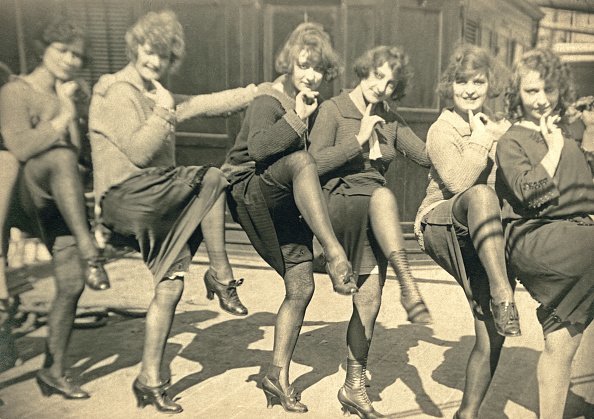
What happened when manufacturers learned how harmful it was? They got rid of it of course! But there was just one teeny tiny problem. The new shoe polish formula didn’t smell like shoe polish, so consumers hated it. So they put it back! And so it’s still there to this day (in certain brands).
People used combs that EXPLODED in the 1800s
In the middle of the 19th century, chemists invented celluloid, one of the very first plastics. Over the years, the name has become virtually synonymous with movies, since almost all movie film was made from celluloid until the 1950s. They finally got rid of it because it was so ridiculously dangerous. Even the heat of the projector lights in the movie theater could cause it to explode.

Which brings us to combs. You see, the original purpose for the invention of celluloid wasn’t movie film, but rather as a substitute for the expensive and hard to find ivory. So all kinds of household items were made from this explosive and highly flammable material. Combs, jewelry, billiard balls, you name it. And yes, fire and explosions were a real hazard with all of them.
People ate chalk to make themselves sick – to be more beautiful
Considering using white chalk to achieve a desired white complexion? Historically speaking, you’re in good company, since people have used chalk as a component of externally applied skin whiteners for centuries. But eating it? Yes, there were women in the 1700s and 1800s who would consume chalk in the belief that it would make them pale. This may not have been an unwarranted assumption, since the chalk was possibly making them sick. Talk about suffering for beauty.

Pica is the clinical term for the craving to eat things other than food. It has been recognized as a disorder since ancient times, and in fact, one of the most common varieties has been women eating chalk. The reasons have been both enigmatic and varied. Aside from wanting to look more beautiful, it has been suggested that chalk eating could be either a treatment or a cause of anemia.
Women used a poisonous plant to make their pupils bigger
Belladonna has been used as a poison since ancient times, including by royalty to bump off their rivals. No surprise there, since the other common name of the plant is “deadly nightshade”. It’s also a hallucinogen, and by all accounts a very unpleasant one. On the good side, extracts from the plant have positive uses in modern medicine, including helping people with certain heart conditions.

But it’s the now largely discontinued use of the plant as a women’s cosmetic that gave the plant its common name belladonna, which is Italian for “beautiful woman”. During the Renaissance, Belladonna extracts would be made into eye drops that women would use to dilate their pupils for a more seductive and attractive appearance. It should come as no surprise that numerous unwanted side effects could be expected, including blindness.
People removed their body hair with x-rays in the early 20th century
One of the historically very recent beauty trends that is hardest to believe today was the very common use of x-rays for hair removal. The practice started not long after the discovery of x-rays around the turn of the 20th century and continued, not without controversy, until at least the 1940s.
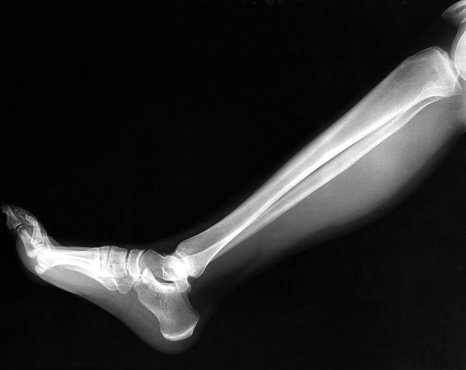
Such was the demand for fashionably smooth hairless skin that women would submit to hours of radiation in order to achieve the desired look. It didn’t take long to discover potential unwanted side effects such as skin thickening and wrinkling, but it took a couple of decades before the cancer risk was discovered, finally bringing this sorry chapter in misguided hygiene to a close.
Elizabethans gave themselves gingivitis to show how rich they were
When sugar started to appear in Elizabethan England, it was quite a luxury item. And those who could afford it used lots of it all the time. It was a real status symbol. Of course, dental hygiene in those days deserves an essay all its own. So the result was that the rich were famous for really bad teeth.

If you were poor in those days and couldn’t come by sugar-rotted teeth honestly, you did the next best thing: blackening your teeth and gums artificially with powder. Understandably, given that rotten teeth invariably led to excruciating pain and finally toothlessness, the fad died out pretty fast.
Tooth lacquering was a trend that turned out to be helpful
In Japan, the custom of ohaguro, or applying black dye to the teeth, was very popular from ancient times until the 19th century. In parts of China and Southeast Asia it survived longer, and can even occasionally be seen today among certain ethnic groups. While glossy black teeth may look strange or ugly to our modern Western eyes, at the time it was seen as a sign of beauty, particularly among married women.

Interestingly, this is one strange old hygiene custom that in fact carried some real benefit to the users. The glossy black dye actually served to protect the teeth much like a modern dental sealant does, and it was reported that people who followed this custom often retained healthy teeth well into old age. The question, though, is whether it was worth it to have healthy teeth if they had to be black.
People used hair products with radium in them
Hard to believe today, but the word “radioactive” was once a selling point for all kids of quack cures and patent medicines before the long term health effects were understood. Which brings us to Caradium, a hair restorer intended to treat grey hair using it secret ingredient, deadly radioactive radium. No, really.

Radium was discovered by Marie Curie at the end of the 19th century and was largely responsible for winning her two Nobel Prizes in physics, as well as her untimely death from likely radiation poisoning.
People’s hair sometimes attracted vermin – because they basically never washed it
‘As we mentioned before, big hair was a trend in the 18th century before coming back in the 1980s. In its first iteration, lard was a common means of building up the height and volume of the hair. That, along with the fact that days and perhaps even weeks could pass between washings meant that all kinds of living things could take up residents in a lady’s hairstyle in the meantime. And some of them could bite.
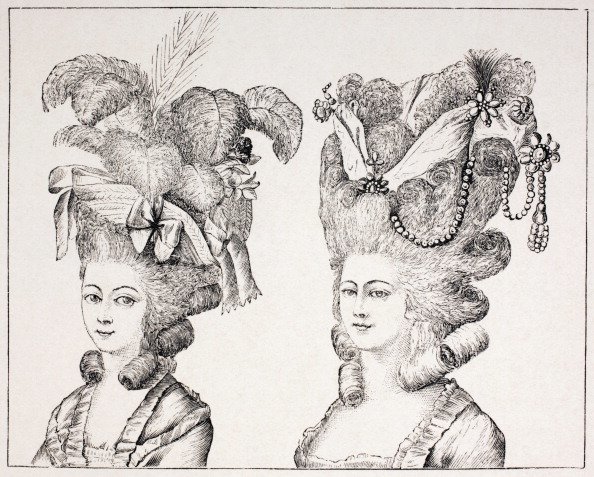
The worst you could say about the 1980s big hair was that it looked stupid and all the hairspray used to keep it up destroyed the ozone layer. So in the end, it might be kinda hard to say which is worse.
Dentures used to be made of the teeth of dead soldiers
Two hundred years ago, the English aristocracy was still suffering from the combination of the availability of sugar and the absence of quality dental care and hygiene. So there was quite a market for healthy human teeth to make dentures. More than they could find, in fact.
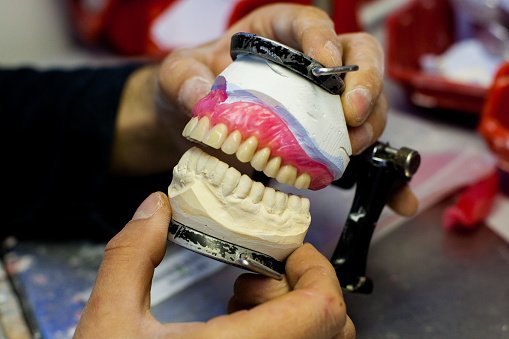
Until the Battle of Waterloo in 1815, that is. Just imagine: thousands upon thousands of freshly-dead young soldiers littering the battlefield, with all those young healthy teeth going to waste. What a goldmine!
Egyptian servants were sometimes slathered in honey to keep flies away from the Pharaoh
It’s good to be the king. If you were the Pharaoh in ancient Egypt, and, say, you hated being surrounded by a cloud of flies (which, living in a tropical river delta could be a real problem), you could simply have a few of your slaves coated in honey and kept nearby. They would attract all the flies, and the Pharaoh would be left in peace to do the hard work of administering the kingdom.

In fact, the Egyptians put honey to lots of uses. Obviously as food, but also as an embalming fluid, as a sacrifice to their gods, and more. And since honey isn’t prone to spoilage, archaeologists have discovered a 3000-year-old jar a honey in an Egyptian tomb, and it’s still edible!
17th century rich people ate human corpses
Medicinal cannibalism. That was really a thing. Just an eyeblink ago historically speaking, in Renaissance Europe, believe it or not. It’s an understandably forgotten footnote of European history, but it really happened.

European nobility would pay for ancient Egyptian mummies, as well as fresher Irish graves to be robbed and turned into all sorts of potions and creams to treat everything from epilepsy and nosebleeds to headaches. Just to be clear, these were not in fact effective cures for anything at all.
Women drank a potion made from beavers’ male parts as birth control
Strange but true, native women in what is now Canada would brew tea made from dried beaver’s testicles as a form of contraception.

Remember the crocodile dung suppositories we read about earlier? Looks like for thousands of years there have been women desperate enough to avoid unwanted pregnancy to go to some pretty extreme lengths.
The ancient Greeks used urine as mouthwash
Not just the Greeks, also the ancient Romans and others thought that rinsing with urine was good for the teeth and for preventing disease. Care to prove them wrong?

The truth is, since urine contains ammonia, the idea is not entirely insane that there could actually be some efficacy to the treatment. But we’re unaware of anyone actually testing the hypothesis rigorously. And that’s understandable.
The ancient Romans used a natural birth control method called Silphium
Silphium was used by the ancient Romans for all sorts of things, including food and folk remedies such as contraception and even abortion. We’ll never know how effective it was, since it went extinct centuries ago.

Silphium was the cornerstone of the North African Greek city-state of Cyrene (in present day Libya). The export of the plant, mostly to the Roman Empire, was so important to them that the plant was emblazoned on most Cyrene coins.
Barbers pulled your tooth out if you had a toothache
In the Middle Ages, barbers were called upon to perform surgery so often that they were often called “barber surgeons”. Among the most common procedures they performed was tooth pulling, which was pretty much the only cure for almost any dental problem.
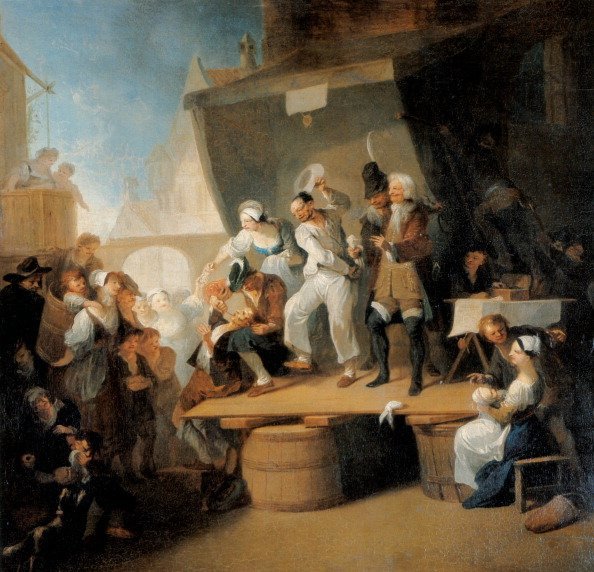
“Real” doctors in those days often considered surgery to be beneath their station in life, which is why amputations and other messy work was often left to the barber surgeons, armed with their trusty straight razors. This bizarre arrangement lasted well beyond the Middle Ages well into the 19th century.
People changed their clothes really, really infrequently
Once upon a time, folks who were not wealthy did not have a lot of clothes in their closets. Or closets. They might have just four changes of clothes, which means they might change them just once per season. If you were really really poor, you might have to sleep in your clothes too.

Not only that, but “not wealthy”, until fairly recently in history, meant almost everyone. There was a tiny sliver of society that was filthy rich, and just about everyone else was a meal or two away from starving to death.
Women used moss during menstruation instead of pads
Quality feminine hygiene products appeared quite recently, historically speaking. Before that, women had to use whatever was handy to soak up the mess, and yes, that could even include moss.

Of course, they’re called feminine hygiene products for a reason. Imagine the rates of infections and other problems that women must have dealt with when they were forced to use unsanitary items in such a sensitive area on a regular basis.
People used sulfur to try to get rid of freckles
Are freckles even a problem? Something that needs “treatment”? Apparently so, at least for some people in some places at some times. And so, among other things, people would rub sulfur on their faces in an attempt to make them go away.

This is a perfect example of the dangers of trying to fit into society’s vision of beauty. Let’s make it clear (no pun intended). There is nothing wrong with freckles, and suffering (and potentially harming yourself) to try to make them go away is just sad.
People didn’t wash their clothes in the winter
Back in the olden times, if it was cold outside, there was a good chance that it would be cold inside too. What could you do about it, anyway? Pretty much the only thing you could do was to set a fire inside the house. And if you weren’t one of the very very rich (meaning just about everyone), the supply of firewood was rather limited. So you stayed cold.

And if you were cold, you kept your clothes on, obviously. All the time. I guess if it were cold enough, at least you weren’t sweating too much, but it probably helped make sure that your parasite load was far above anything we would tolerate today. And the smell…
People brushed their teeth with burnt herbs
The good news is that common herbs used in toothpaste were rosemary and mint. The bad news is that they were burnt.

Probably the most striking difference between modern and olden times with regards to hygiene is the field of dental health. If you like your teeth, be grateful that you’re alive today, not back then.
People carried flowers to mask how bad they smelled
As you’ve probably figured out by now, people didn’t bathe very often way back when. So body odor was a real problem. Even though people tolerated it more than they do today, there were limits. That’s where “nosegays” in the sense of little bouquets carried around on the body come from. They were accessories for your nose!

Oh, the lengths people would go to to mask their body odor. And even so, for all the bizarre efforts they would make, the world was a far far smellier place before modern times. Especially in crowded cities. The combination of ineffective (or non-existent) sewage treatment and smelly people would be intolerable to modern noses.
Medieval women were given eagle dung to ease their pain during labor
Look on the bright side: at least people cared about labor pain and wanted to do something about it, regardless of how effective it was.

Among the bizarre attempts at easing labor pain was a poultice of eagle droppings mixed with oil and vinegar. It’s unclear why anyone thought this would help.
Ancient Romans used mouse brains to brush their teeth
The ancient Romans would mix extracts of mouse brains and other disgusting ingredients with baking soda to prepare a toothpaste intended to produce white cavity-free teeth. The baking soda part actually makes sense; it is a common ingredient in toothpastes to this very day, but why all the other weird stuff?
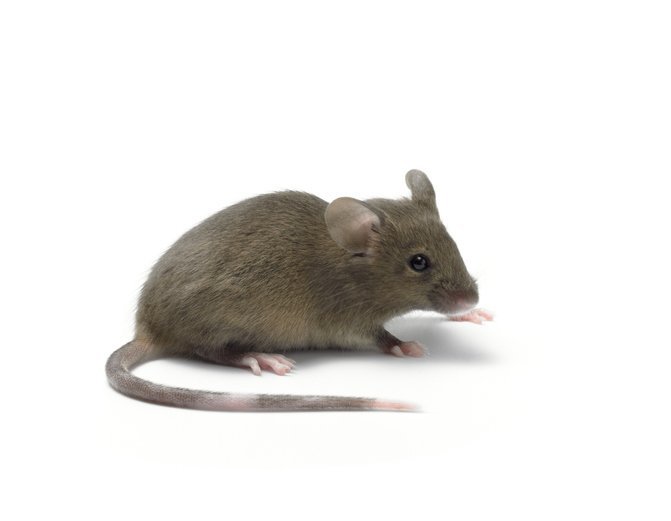
It was Pliny the Elder, one of the fathers of natural philosophy, the precursor to modern science, who suggested the mouse brain part. Who knows what sorts of experiments led to this suggestion. And one wonders what ingredients he rejected before settling on this one.
Laundry was washed with lye… and urine
These days, urine is one of the things we generally want to get out when we wash clothes. But back in the day, it was one of the only easily available sources of ammonia, which is still used in disinfectants to this day.

The lye, aside from being dangerous to handle and potentially decreasing the lifespan of the clothes, certainly did kill anything that might be living in the clothes. At least people cared about clean and disinfected clothes in those days. No word about how they smelled when they were clean, though, let alone when they were dirty.
Castle moats were actually filled with… all sorts of stuff
A moat might look like an attractive place to go for a dip, but think twice. The moats were the most convenient place for castles and cities to dump their sewage and rotten food, so no swimming!

Medieval cities and sewage go together like … well, you can make up your own unpleasant simile. The constant stink of European cities in those days is legendary. All the ingenious Roman solutions had been forgotten, and the modern ones hadn’t been invented yet.
In many houses in medieval times, the floor was covered with straw
When the straw got really gross, it would get swept out and replaced, but the layer underneath rarely was. Especially if it was clay or dirt, which was pretty much uncleanable.

This nasty bit of history wasn’t even limited to the poorest of the poor. This was true often of churches and other indoor public spaces.
Most medieval people ate food with their fingers
Rich and poor alike did almost all of their eating with their hands. Sometimes a chunk of bread could be used to help sop up the more juicy bits, but otherwise, it was just hold on and stuff it in your mouth. And hand washing was uncommon, seen as basically unnecessary.

The only cutlery that would be used was a knife that people would carry around to cut up meat to make it small enough to handle. And if you were really civilized, you’d also carry a spoon in your pocket to eat soup with.
Surgical implements were not washed or sanitized
Since science didn’t discover germs until the 19th century, sterilizing surgical implements would have been seen as a bizarre and unnecessary waste of time before then.

Doctors were slow to catch on to the germ theory of disease. Even as the evidence piled on connecting sterility to reduced rates of infection, there was a lot of pushback, until it couldn’t be denied any more.
Mercury was used as a cure for cold sores
Mercury is cool! It’s the metal that’s liquid at common temperatures! It’s also highly toxic, but people didn’t always know that. So they would apply it to cold sores in a fruitless attempt to make them go away.

Until the discovery of the harmful long term effects of mercury, it was seen as a sort of magical substance that would be used to attempt to cure all sorts of things, from syphilis to bellyaches. And up to modern times, it was still found in all sorts of common household items.
Lots of water storage facilities were lined with lead
You know why they call it plumbing? It’s from the Latin word plumbum, meaning lead. Yes, the toxic heavy metal. Once upon a time it was used for almost any imaginable water-related function, from pipes to reservoirs.

It was extremely useful because it has a low melting point, can be easily shaped and makes a great waterproof seal. When it’s long-term potential to damage human health was discovered, the use of lead in contact with drinking water was discontinued.
Wounds were cauterized to close them. Yes, that means they were BURNED CLOSED
Some wounds are best treated by cauterization even today, but during the medieval period, that was about the only way to stop any sort of bleeding. And not with a sterile professional tool, but with a glowing red-hot poker. Infections often resulted, and dying from minor wounds was common.
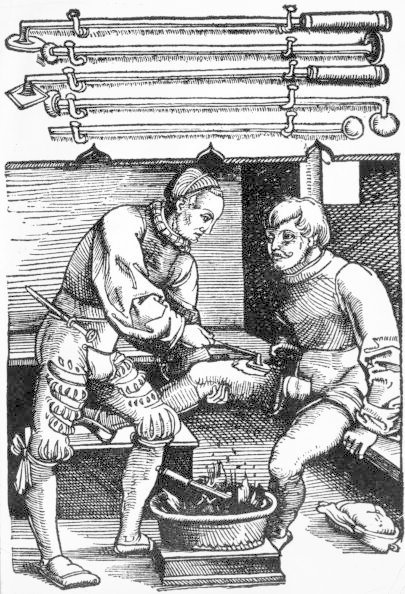
This is an example not of a bad or crazy idea, nor of some bizarre superstition, but simply an example of how much more dangerous the world was without modern technology. Cauterizing was simply the best that people back then could do to keep people from bleeding to death. After that, it was just a matter of hoping for the best.
Lysol – yes, the kitchen cleaner – was suggested as a feminine hygiene product
In the 1920s and 30s, it was considered good hygiene for women to wash themselves “down there” with honest-to-goodness Lysol. Because imagine the shame if even the slightest female odor were to come from the female anatomy!

Lysol was used as a douche not only for the sake of hygiene, but also as a contraceptive after sex. And obstetricians would even wash the whole birth canal area with Lysol before delivering babies! Unfortunately, by killing the healthy natural bacteria that belongs in the vagina, Lysol ended up causing infections by stronger disease causing bacteria.
Graham crackers were invented to stave off the urge to pleasure oneself
Sylvester Graham, a 19th century American preacher, founded a movement that centered on minimizing all physical pleasure as part of a holy — and healthy — lifestyle. This involved vegetarianism, abstinence from alcohol, the use of coarsely ground whole wheat, and, of course, a dim view of sex, especially of the solo variety. In fact, he believed that following the dietary rules would help prevent temptation in the “intimate” arena.

Graham’s religious movement inspired all sorts of recipes, but the one that has outlasted the rest and remains wildly popular today is the graham cracker named after him. It is, as advertised, made from coarsely ground whole wheat, and not much else. Surprisingly tasty, though. And how would we ever make cheesecake crusts without them?
Deodorant was invented in 1888
Yes, before 1888, the only solutions, such as they were, to the problem of body odor, were to either use lots and lots of perfume, or to — wait for it — bathe regularly!

On the one hand, the world used to be a far, far smellier place than it is today. On the other hand, people just learned to live with it.
People wiped their butts with all sorts of things
Tissue paper specially produced to wipe your bottom only became popular in the West in the 19th century, though China had been producing it since the 6th century. Before that, folks had to make do (get it?) with whatever they could find. It could be paper, in the form of old newspapers or discarded books, or leaves, grass, their hands (!), you name it.

The Romans used a sponge on a stick that they would leave to soak in vinegar between uses. Pictured above is a collection of 8th century wooden Japanese implements made for just this purpose. You may be sure that modern toilet paper is the more gentle option.
People wiped their beds with kerosene to try to stop the spread of bed bugs
Many fires have been started due to the use of kerosene as bed bug control. And even if you avoid burning your house down, you’re still stuck with the nasty stink of kerosene all over your bed. Plus, it’s not all that effective anyway.

Bed bugs are seriously hardy creatures. Once your home is infested, getting rid of them for good without professional assistance may not be possible. And even the pros may have to make a number of visits before the nasty little things are finally eradicated.
Roman women used tampons made of wool
Among wool’s best known characteristics is a tendency toward scratchiness. That would make it a less than ideal substance to stuff inside one of the more sensitive parts of a woman’s anatomy.

Other historical tampon materials from other parts of the world include moss, paper, and grass. The modern tampon was first produced in 1933. Three cheers for modern times!
Raw sewage was simply tossed into the river before modern plumbing
Nowadays, in the developed world, sewage undergoes considerable treatment before being finally disposed of. This is why water-borne illnesses are virtually a thing of the past in those countries. Of course, it hasn’t always been that way. Not even close.

Once upon a time, if your city was on the banks of a river (and most were), then the river was your sewer. And if it was a particularly big city, like say 19th century London, not only was the stench often unbearable, but major pandemics such as cholera would kill thousands of people.
Birth control devices were illegal to advertise in the U.S. starting in 1873
America’s Comstock Laws of 1873 made it illegal to advertise or send by mail anything of a sexual nature or intended for contraception. This led to delicately ingenious turns of phrase such as “marital hygiene” in order to get around the law, or at least avoid getting punished.

The term “Comstock Laws” refers not so much to one specific thing as much as a general trend in obscenity law that began in 1873 and continued in one form or another for decades. Hard to believe all this was just a couple of generations ago.
A mixture of gunpowder and alum was used as a tooth-cleaning solution in Regency times
Yes, in merry old England around the turn of the 19th century, this was just one more in a long list of bizarre attempts at preventing teeth from rotting away.
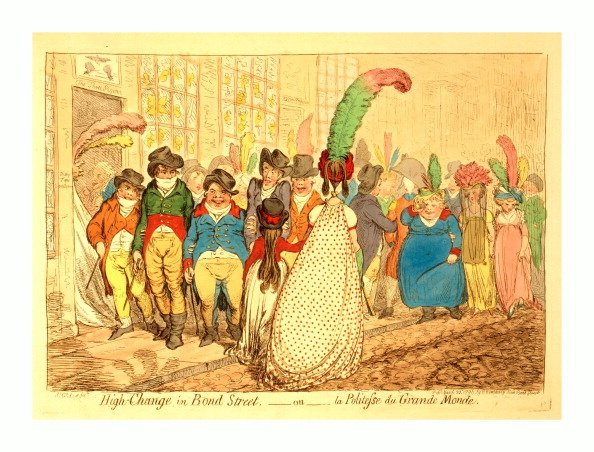
The English have been nothing if not inventive. They seem to have been willing to experiment with just about anything and see if it worked. Now that’s dedication to science!
Toilets were sometimes just a hole in the ground
Outhouses can still be found today in many rural locations around the world. The old style, literally just a hole without anything to sit on, was a bit more unpleasant, though some say it is actually healthier for your bowels if you squat rather than sit.

Nevertheless, the toilet has won. Almost everyone uses them, even if they’re the non-flushing variety in an outhouse. Could this be one example where modern hygiene is actually worse for you than the old way of doing things?
People would consume pieces of cadavers that had been mummified in honey as a cure
A 16th century Chinese doctor described a report he had received about an ancient Arabian custom whereby old men would consume nothing but honey toward the end of their lives. After they died, their bodies would be sealed in a coffin filled with honey for a hundred years. At the end of this time, the coffin would be opened, and the candied human contents would be used as cures for everything from broken bones to illnesses.

Other cultures reputed to have engaged in the custom of creating “mellified men” are the Ancient Greeks, Assyrians, Burmese, and Egyptians. Due to honey’s unique preservative qualities, its use for embalming and mummification is not inconceivable. But to eat it? Thanks but no thanks.
Snail syrup was used as a cough cure in the 18th century
It was actually the slime of the snail that was considered to be an effective cure for coughs because it would coat the patient’s throat. The ancient recipe called for two parts snails to one part sugar. Yum!

Shockingly, snail slime is making a major comeback in the ever-growing field of alternative medicine. It’s being marketed on numerous online sites making diverse health claims. Who knows, maybe the past is the future.
People had their blood drained to cure just about everything
Hippocrates, the Father of Medicine, believed that menstruating made a woman healthy by ridding her body of “bad humors”. This led to the idea that bleeding all sick people could help cure them by bringing their humors back into balance. This was, in hindsight, not a very good idea.

And still, it caught on. In a big way. It was a common practice until the 19th century to try to bleed people back to health. Amazingly, for something like two thousand years, bloodletting was among the most frequently performed medical procedures.
Arabs in the 12th century used mummy powder for all sorts of things
Due to a mistranslation of the Arabic word mummia, which actually means bitumen, the demand for actual Ancient Egyptian mummies let to a lively trade in the 12th century. The Arabs in Egypt were only too happy to supply the raw materials, so to speak, in exchange for lots and lots of money.

The mummies were turned into, yes, yet another cure-all drug. With so many panaceas in olden times, it’s a wonder anyone ever died. When the supply of Egyptian mummies started running low, Europeans took to local grave robbing to fill the demand. Oh, and the original Arabic meaning of the mummia – bitumen? Not clear if that was at all effective either.
A tobacco smoke enema was used as a health tonic in the 17th and 18th centuries
When Europeans adopted the use of tobacco from the Native Americans, they ascribed all sorts of potential healing attributes to it, just like they did at one point or another to every other drug they ever tried. The warmth of the smoke and the stimulation of the nicotine were thought to be healthful. In hindsight, this could charitably be called a mistake.

Tobacco was believed to be so benign for centuries that doctors would sometimes even prescribe cigarettes to pregnant women to calm the nerves and control weight gain. It just seemed inconceivable that it could be bad for you. We know better now, right?
Tapeworms were used as a diet aid
Yes, by all means, let’s get infected on purpose by a nasty parasite in order to attain the perfect vision of Victorian beauty. What could possibly go wrong? Well, just in terms of the desired outcomes of this insanity, it wouldn’t always work, since the abdomen might get distended from the tapeworm, and it often caused an increased appetite, leading to weight gain. Not to mention little side effects like major organ damage and death.

But we’re all past such craziness now in our comfortable modern world, right? Wrong! Just do a Google search for “tapeworm diet” and you’ll see sites claiming to actually sell tapeworm eggs for people to swallow to infect themselves with. You’ll also see reputable health sites telling you why this is a very very bad idea. Listen to them.

Is Your Pet Dreaming?

A New Organ Has Officially Been Discovered In The Human Body

Hummingbirds See Colors We Can’t Even Imagine
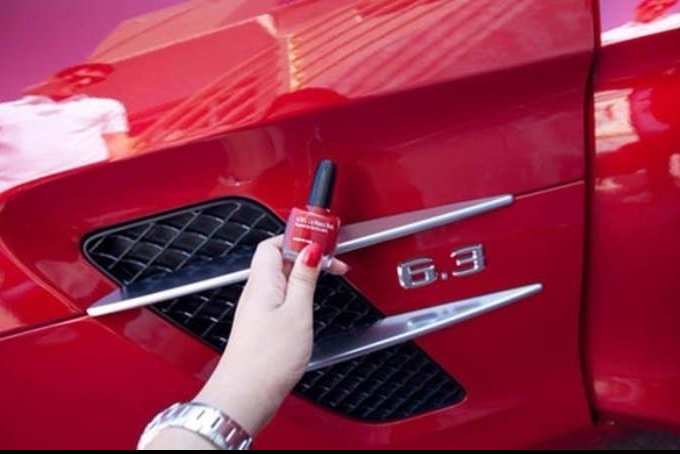
Secret Car Cleaning Hacks Revealed
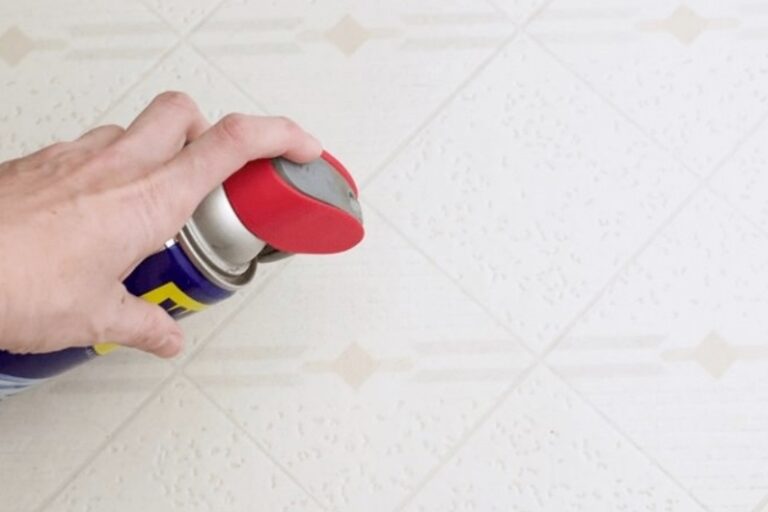
More Useful WD-40 Hacks That Will Have You Feeling Ahead of the Game
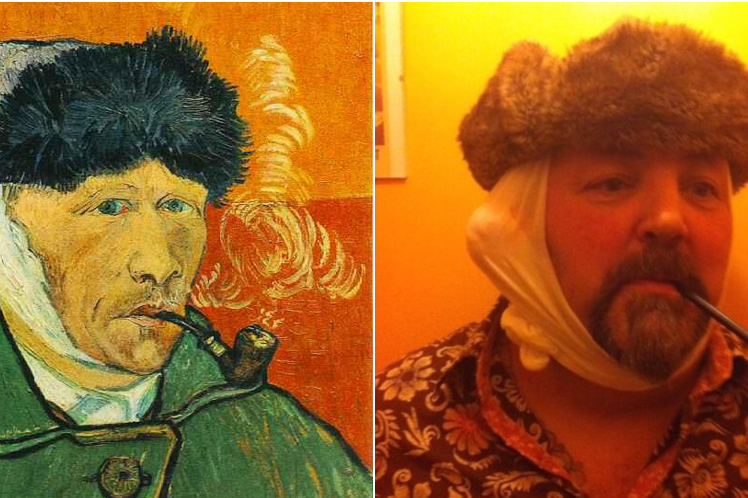
This Viral Challenge Has People Recreating Famous Paintings and the Results Are Spectacular
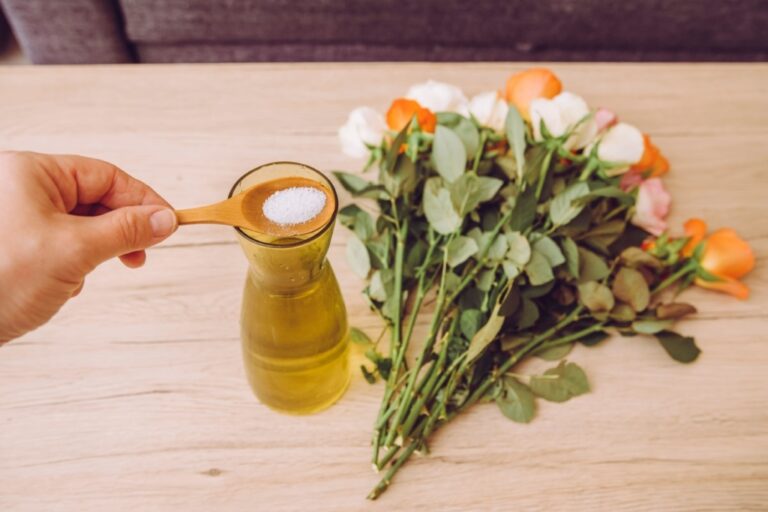
Unexpected Salt Hacks You Need To Know

The Thomas Jefferson Mystery

Beautiful Abandoned Places
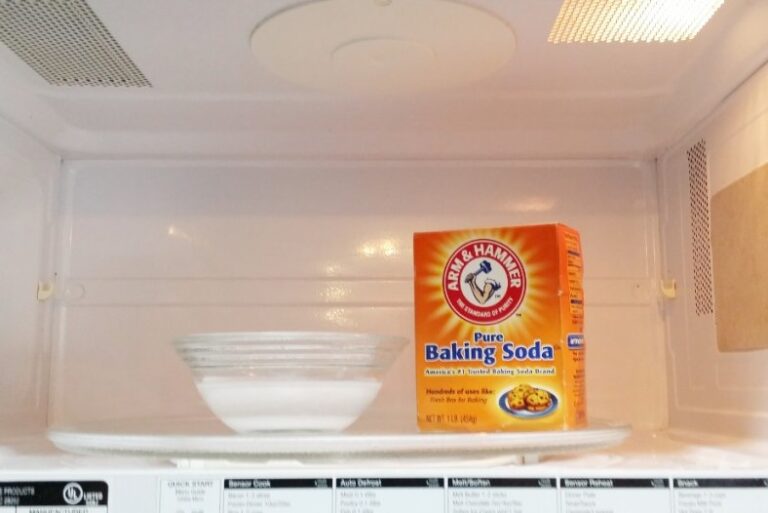
Not Just for Baking: Baking Soda Hacks That Will Change Your Life

